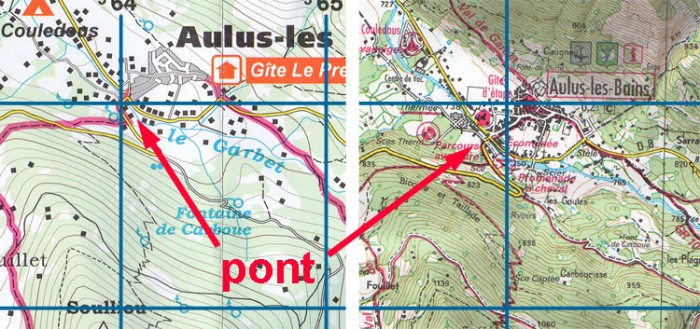
GPS with on-board map, showing waypoints
Many hikers have told me that they have a GPS but never use it. At first I couldn’t understand why, because mine has become an essential tool. Gradually, I realised that they had a limited vision of what it was for.
Some used their GPS like a first-aid kit. It stayed in the rucksack until they had a problem.
Others used it like Ariadne’s thread. They carried it around, switched on, but only consulted it if the fog descended and they needed it to find their way back home.
After a few months, the GPS no longer even made it into the rucksack.
Yes, a GPS can be used like a first-aid kit or like Ariadne’s thread. But that’s missing the point. A GPS is not merely a navigation tool. It can be used to improve walking. It can be used like a guidebook. Here’s how.

Detail of the GPS screen. From top to bottom: 1824m = height above sea level ; 0394759 x 4724803 = coordinates; 534m = distance to arrow; 052 1 etc = waypoints along path; 300m = scale (can be enlarged to 20m).
Off the beaten path with a GPS
When I go hiking I often avoid the standard paths with their ubiquitous waymarks and frequent crowds. There are many more paths marked on maps: the only problem is finding them. Because they are little used, they are often hidden.
This is where a GPS comes in. But not on its own. The salesmen won’t tell you, but a GPS on its own is next to useless. You also need GPS compatible maps on your computer (which you can transfer to your GPS). Some of the maps cost as much as the GPS again! But some very good maps can be downloaded for free, see the Open Street Map project and Topo Pirineos (for the Pyrenees), for example. And you need Google Earth, but that too is free.
(more…)











